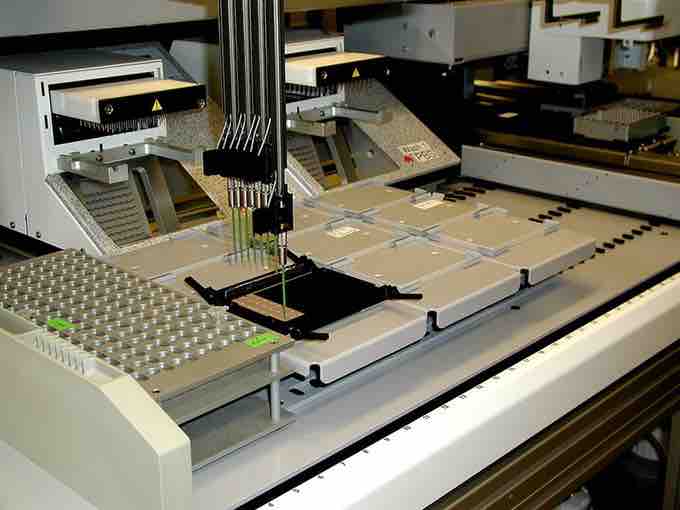Proteomics is a relatively-recent field; the term was coined in 1994 while the science itself had its origins in electrophoresis techniques of the 1970's and 1980's. The study of proteins, however, has been a scientific focus for a much longer time. Studying proteins generates insight into how they affect cell processes. Conversely, this study also investigates how proteins themselves are affected by cell processes or the external environment. Proteins provide intricate control of cellular machinery; they are, in many cases, components of that same machinery. They serve a variety of functions within the cell; there are thousands of distinct proteins and peptides in almost every organism. The goal of proteomics is to analyze the varying proteomes of an organism at different times in order to highlight differences between them. Put more simply, proteomics analyzes the structure and function of biological systems. For example, the protein content of a cancerous cell is often different from that of a healthy cell. Certain proteins in the cancerous cell may not be present in the healthy cell, making these unique proteins good targets for anti-cancer drugs. The realization of this goal is difficult; both purification and identification of proteins in any organism can be hindered by a multitude of biological and environmental factors.
The study of the function of proteomes is called proteomics. A proteome is the entire set of proteins produced by a cell type. Genomics led to proteomics (via transcriptomics) as a logical step. Proteomes can be studied using the knowledge of genomes because genes code for mRNAs and the mRNAs encode proteins. Although mRNA analysis is a step in the right direction, not all mRNAs are translated into proteins. Proteomics complements genomics and is useful when scientists want to test their hypotheses that were based on genes. Even though all cells of a multicellular organism have the same set of genes, the set of proteins produced in different tissues is different and dependent on gene expression. Thus, the genome is constant, but the proteome varies and is dynamic within an organism. In addition, RNAs can be alternately spliced (cut and pasted to create novel combinations and novel proteins) and many proteins are modified after translation by processes such as proteolytic cleavage, phosphorylation, glycosylation, and ubiquitination. There are also protein-protein interactions, which complicate the study of proteomes. Although the genome provides a blueprint, the final architecture depends on several factors that can change the progression of events that generate the proteome.

Large-scale proteomics machinery
This machine is preparing to do a proteomic pattern analysis to identify specific cancers so that an accurate cancer prognosis can be made.